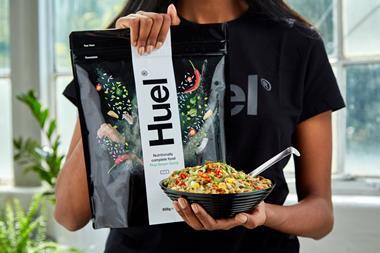Take this ideal: 'A nation of well-informed consumers able to make the appropriate choices for their dietary needs and those of their families, from a wide range of affordable, available, safe, wholesome food'.
That seems to me an objective that everyone can sign up to - government, regulator, NGOs, individuals. If so, we should all remain focused on it - and on how we can achieve it through working in partnership. Partnerships tend to work better when they build on a shared objective and on reaping maximum benefit from areas of agreement. And each party should trust the others to play their appropriate part.
The recent food and health debate seems to have focused too much on disagreements about the 'how' rather than the 'what'.
It is right that government should decide the strategy, working in partnership with others so that the vision becomes a shared one.
As an ex-civil servant you'd expect me to say that government is rather good at the strategic level. But where it is less good - and this should not be its role - is understanding the 'how' - the best way to deliver the strategic objectives.
We should be able to agree some principles of the 'how' - it should always be in the best interests of the consumer; based on sound science and evidence; economically viable; and should maintain and improve already high standards of food safety. But in the detail it is industry that understands delivery.
Government should trust industry to define the 'how'. Have we earned that trust? I believe we have. Let's look at the evidence: on reformulation, for example, FDF's 2005 Delivering on Our Commitments survey of food and drink suppliers showed that £7.4bn of products had lower levels of salt and £2.2bn had lower levels of fat than in 2004.
We are supporting, through the Broadcasting Committee on Advertising Practice, probably the toughest regulations on advertising to children anywhere in the world.
And we are investing not only in putting full nutrition information on pack - on almost £33bn worth of products by the end of this year - but also increasingly in responding to the government's challenge to make this information more accessible by providing signposting information on the front of packs.
A group of leading manufacturers has agreed a common format for doing that through GDA-based information.
And let's not forget that GDAs are factual, objective and have broad support across industry, government and regulators. To fully unlock the power of GDAs they need to be widely used and better understood; we are devoting significant resources to make sure that consumers can do just that.
Our evidence shows that this is what they want - empowerment, not direction.
The only way to get longstanding change in consumer behaviour is through education.
In this respect the government's Small Change, Big Difference initiative is a breakthrough.
It provides an opportunity for a new kind of partnership between the government and the industry, where all of us have a role in working together to help people to make healthy choices and where, as it should be, delivery is integrated into individual business strategies and delivery mechanisms.
I would urge government to make early progress here and to remain focused on the strategy. Industry with its wealth of knowledge and experience with consumers is a willing delivery partner.
That seems to me an objective that everyone can sign up to - government, regulator, NGOs, individuals. If so, we should all remain focused on it - and on how we can achieve it through working in partnership. Partnerships tend to work better when they build on a shared objective and on reaping maximum benefit from areas of agreement. And each party should trust the others to play their appropriate part.
The recent food and health debate seems to have focused too much on disagreements about the 'how' rather than the 'what'.
It is right that government should decide the strategy, working in partnership with others so that the vision becomes a shared one.
As an ex-civil servant you'd expect me to say that government is rather good at the strategic level. But where it is less good - and this should not be its role - is understanding the 'how' - the best way to deliver the strategic objectives.
We should be able to agree some principles of the 'how' - it should always be in the best interests of the consumer; based on sound science and evidence; economically viable; and should maintain and improve already high standards of food safety. But in the detail it is industry that understands delivery.
Government should trust industry to define the 'how'. Have we earned that trust? I believe we have. Let's look at the evidence: on reformulation, for example, FDF's 2005 Delivering on Our Commitments survey of food and drink suppliers showed that £7.4bn of products had lower levels of salt and £2.2bn had lower levels of fat than in 2004.
We are supporting, through the Broadcasting Committee on Advertising Practice, probably the toughest regulations on advertising to children anywhere in the world.
And we are investing not only in putting full nutrition information on pack - on almost £33bn worth of products by the end of this year - but also increasingly in responding to the government's challenge to make this information more accessible by providing signposting information on the front of packs.
A group of leading manufacturers has agreed a common format for doing that through GDA-based information.
And let's not forget that GDAs are factual, objective and have broad support across industry, government and regulators. To fully unlock the power of GDAs they need to be widely used and better understood; we are devoting significant resources to make sure that consumers can do just that.
Our evidence shows that this is what they want - empowerment, not direction.
The only way to get longstanding change in consumer behaviour is through education.
In this respect the government's Small Change, Big Difference initiative is a breakthrough.
It provides an opportunity for a new kind of partnership between the government and the industry, where all of us have a role in working together to help people to make healthy choices and where, as it should be, delivery is integrated into individual business strategies and delivery mechanisms.
I would urge government to make early progress here and to remain focused on the strategy. Industry with its wealth of knowledge and experience with consumers is a willing delivery partner.














No comments yet